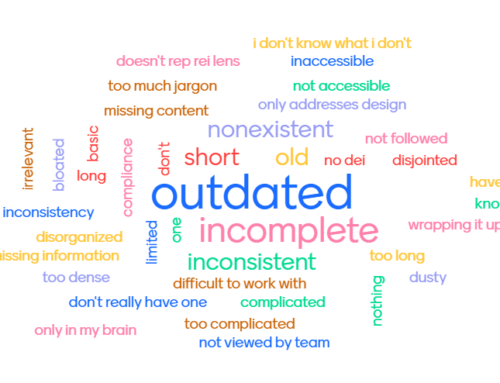I asked for your storytelling questions at the beginning of March on Facebook, and answered a few of them with these posts:
Three Stories Every Nonprofit Should Tell
Telling Stories When You Help Indirectly
Storytelling: Behind the Scenes at One Warm Coat
Here are my “lightening round” answers to the remaining questions . . .
Q: What are the different ways stories can be used and for what purpose?
Stories are perfect in any scenario where you think an example could illustrate your point. They are also essential anywhere you need to make an emotional connection.
Check out these earlier posts . . .
Using Stories in Fundraising: What Would You Do?
More Proof that Storytelling and Gratitude Payoff
How to Get Top Mileage Out of Your Best Stories
Q: How can we tell stories that promote community change? The concept of “community change” (aka “systems-level change” in social-work speak) is hard to grab on to, so we talk about our vision for the community and how the coalitions will help us get there. But there’s a lot of intellectual discussion here and not much heart.
This is a tough one, but I suggest using stories as a way to “connect the dots.” It’s hard for people to see the long and winding path of social change, so pick a few markers of progress (or barriers) along the way, and then tell stories about what’s happening at those markers.
Q: Photos are next to impossible to come by. Any suggestions on how to make the story compelling without a name or face?
Stock photography is probably your best choice. There’s good stock, and bad stock. Invest some time in sorting through the various websites until you find some photos that look natural. They are out there.
You could also pay a professional photographer (or get a really good volunteer) to stage some photos for you with models, so you get the look you are after.
Q: I work for an environmental advocacy organization that works on every environmental problem in the state. The victories are ethereal. How do we find stories of the impacts of our work?
Much like the answer above about community change, I think you have to break the ethereal down into smaller, more real elements. You need to answer the “So what?” question about your work over and over until you get to something specific.
Q: How do you incorporate storytelling when the people your organization serves are children? Some see using their stories are exploitive.
Telling stories about kids (or anyone who for whatever reason doesn’t really have the capacity to give permission themselves) does require extra care. Stories are an excellent way to illustrate both problems and solutions, and you can do that without exploiting any one person.
Here’s what I said in my book about protecting the privacy of people in your stories:
Many nonprofits must wrangle with legal and ethical issues when talking about the people they serve. But don’t use confidentiality requirements as an excuse for avoiding storytelling. You can approach this challenge is several different ways.
Get permission. Simply ask the person if it’s OK to tell their story, or if you need something more formal (good for potentially controversial or otherwise touchy topics), ask them to sign a release. You can find sample release language by searching online for “story release form” or “model release form.” Write the story, complete with the level of detail you would like to share. Let the subject of the story read it and make any edits she’d like. When you explain how you’ll be using the story to build support for your agency, many people are not only flattered, but pleased to be able to give back in this way.
Change identifying details. You can change elements of the story that are not central to it in order to protect someone’s identify. You can change the person’s name, location, age, and other demographics that are irrelevant to the outcome of the story.
Create a composite. You can combine elements of more than one person’s story into a new fictional character. However, be careful not to present this person as a real human being. Instead, open your story with language like, “Imagine if you were a . . .” or “What if . . .” By using this approach, you are making the story more about the listener and asking that person to put himself in the shoes of someone else. Ensure that your composite still rings true and sounds as if it could be a real person in your community, even if it isn’t.
Q: What’s the best way to find stories within your organization? Can you do something beyond asking people to “send us your story”? That doesn’t always generate a great response.
Most people don’t know what you are talking about when you ask for stories. You have to give them examples of good stories, and then ask if they have a story to share. Also become familiar with the parts of a good story yourself. Then when you overhear those elements, you can dig a little deeper to uncover the full story. Be curious and ask lots of questions!
Q: Storytelling is the most persuasive way to get an audience engaged, but I sometimes feel that clients’ stories get diluted because we have to include mention of a bunch of other stuff that may not be of the greatest interest. Can the communications that nonprofits create be ONLY stories?
Definitely! And, I agree, many nonprofits shoot themselves in the foot by watering down powerful stories with a bunch of facts and figures.
I do think you need to make that next step clear, however. What should the viewer/reader do after watching/hearing the story? Sometimes the call to action is very clear and other times it’s more subtle, but I think you need that next step.
Thanks for all the great questions!






